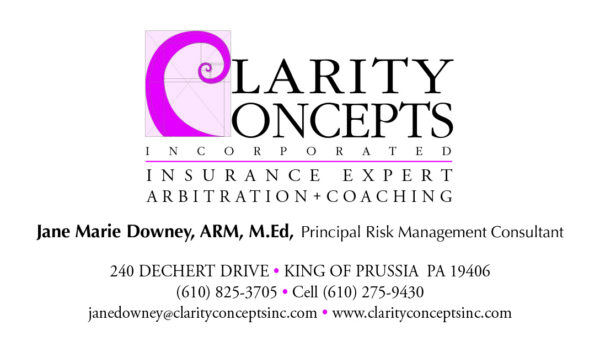Results For Articles or Consultants
E&O Avoidance and Prevention
When insurers receive a claim or suit from an insured or third party, they must first make sure that subsequent actions by all parties are in accordance with the conditions required by the policy and applicable laws and regulations. Violating such conditions and guidelines can lead to unintended consequences. For example, courts could refuse to uphold claims denials and possibly recognize bad faith suits, instead. Or an insurance department could find that the insurer broke a law and subsequently impose regulatory penalties. This article discusses how to avoid such outcomes by discussing important, but basic, dos and don’ts, illustrated through real-life examples.
“This number (224) likely represents just a small fraction of the notice-based denials that never
make their way to a courtroom. More must bedone to educate policyholders on how to comply with their policies’ claims-made reporting requirements. How did notice-based denials under claimsmade forms become so common? To understand how the industry has arrived at this
point, it is important to explore the history and evolution of the claims-made form.
There are six main reasons for these denials.
1.Late reporting of a claim after policy expiration
2.Failure to disclose known claims or potential facts and circumstances that could
give rise to claims later on an application (and not reporting same under the notice
of potential claim provisions)
3.Failure to identify that the current claim being reported is related to a prior claim reported to a previous insurer or previous policy with the same insurer
4.Failure to disclose prior-pending claims made on an insurance application
5.Reporting the claim in a manner that is not as directed by the policy language itself
6.Claims denied for not reporting “as soon as practicable”
The main driver of denials is that the policyholder reported the claim after the policy expired, as represented by 101 denials upheld by the courts. Not too far behind that category is
the situation where the insured knew of a claim or wrongful act before the inception of a policy.
Here is a breakdown of the six categories. … “
“Overall, many of the more common issues were explored in previous articles. That is not to say, however, that these are complete solutions. I have long been of the belief that extended reporting provisions, when invoked, are an incomplete solution for long-term protection. That is because one is taking a limit of liability and stretching it across at least one year and sometimes six years or more. The limits, thus, are never refreshed. So, if there are any claims during the extended reporting term, policy limits are being eroded. This could mean that policy limits could be extinguished by claim frequency, and the benefit of runoff would be lost when that happens before the term had even run out.”
“There are inherent dangers when a company is acquired, not only for the selling company, but for the acquiring company. It is not uncommon for the buyer to require the seller purchase several years of extended reporting coverage. This is because the buyer, when either acquiring the assets or the stock transaction, wants no exposure to any known or unknow liabilities created by activities before the acquisition.
We’ve all seen companies get acquired, with the seller invoking whatever extended reporting coverage they can acquire, sometimes at a significant price. But that is not the only problem, and this is where the approach and analysis become important. Asking the right questions is thus necessary to provide the appropriate financial protection to those involved, with the avoidance of any error and omission claim that might be made against the broker, despite whether they are simply following an “order take” standard or not.”
“laims made insurance policies have existed for a long time. For specialty line insurance policies, such as directors and officers liability, professional liability, cyber liability etc., they are the most common type of policy issued.
They are complex, and depending on the definition of claim, as well as whether or not it’s a claims made and reported form, the policies can be extremely dangerous.
What follows is the first installment of a three-part series on the complexities involved in securing extended reporting coverage in conjunction with claims made policies. I have written numerous articles on claims made trigger problems, prior act problems, prior pending claim exclusions, etc. These only make the problems more dangerous for insureds and for insurance producers. However, and unfortunately, one important aspect of the policy that I’ve somewhat been lax to review in depth is the complexity of the extended reporting provision (ERP) and the ability to buy optional extended reporting period coverage, also known as runoff coverage and/or retirement coverage. Even my own article, The Dangers that May Lurk in All Claims Made Policies, raises extended reporting provisions, but not in depth.”
Brokers are supposed to be independent to represent the insured, rather than the insurer; yet, the law in many states still requires insurers to appoint a broker as an agent actually to transact insurance with the insurer. This dual agency creates well-known conflicts and burdens. We contend that the requirement that insurers appoint agents in…



